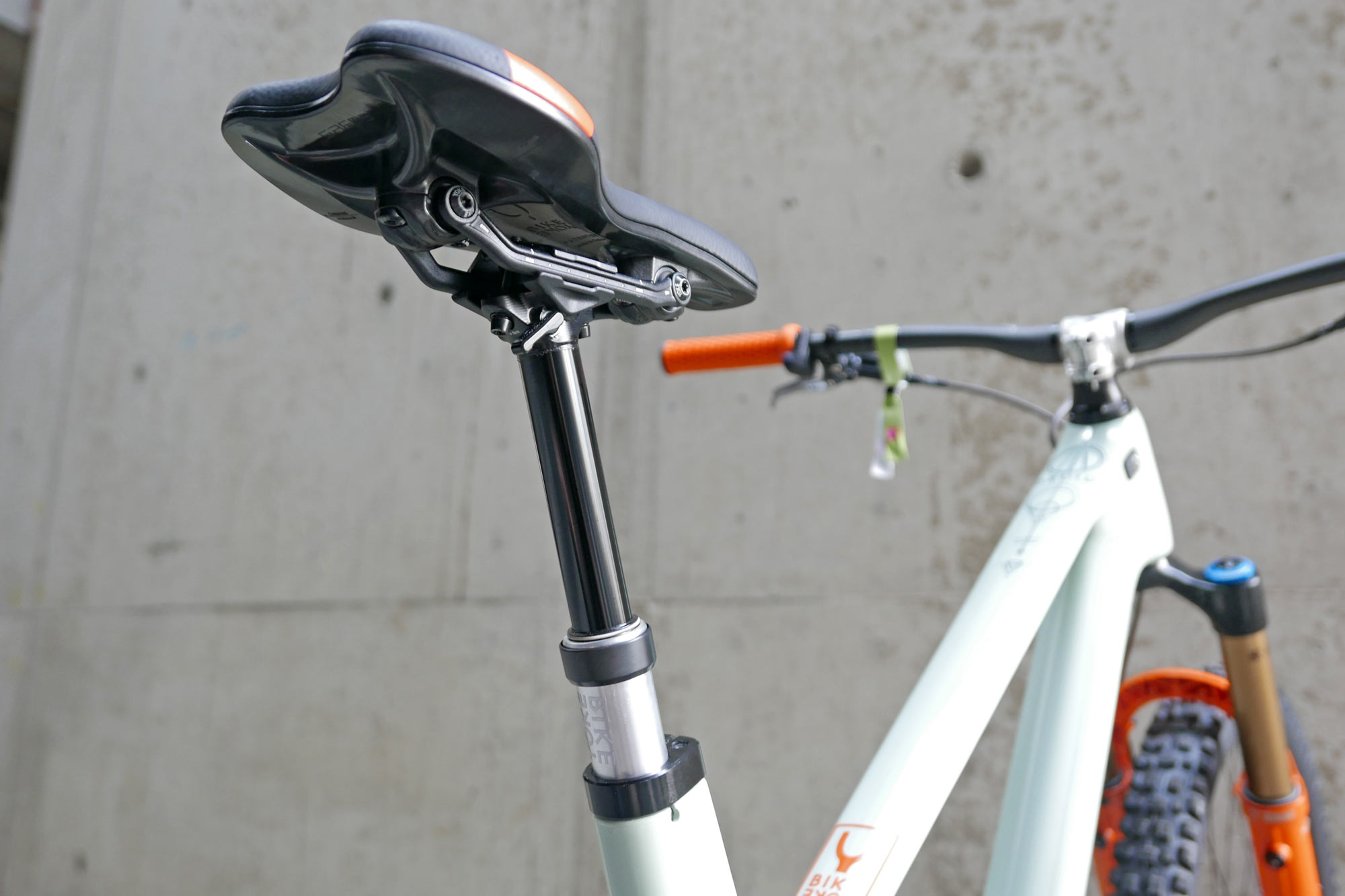The BikeYoke Revive dropper seatpost that set the benchmark for reliability and serviceability is soon to go wireless, in a new electronically actuated upgrade that will put an end to any internal cable routing hassles. We got a first look and some first saddle drops on some nearly finished prototypes today, and it looks really promising.
Plus, BikeYoke’s Stefan Sack always has a lot of cool ideas bouncing around inside of his head, so he showed me some prototype mountain bike pedals and a new handlebar, too!
BikeYoke Revive Wireless electronic MTB dropper seatpost
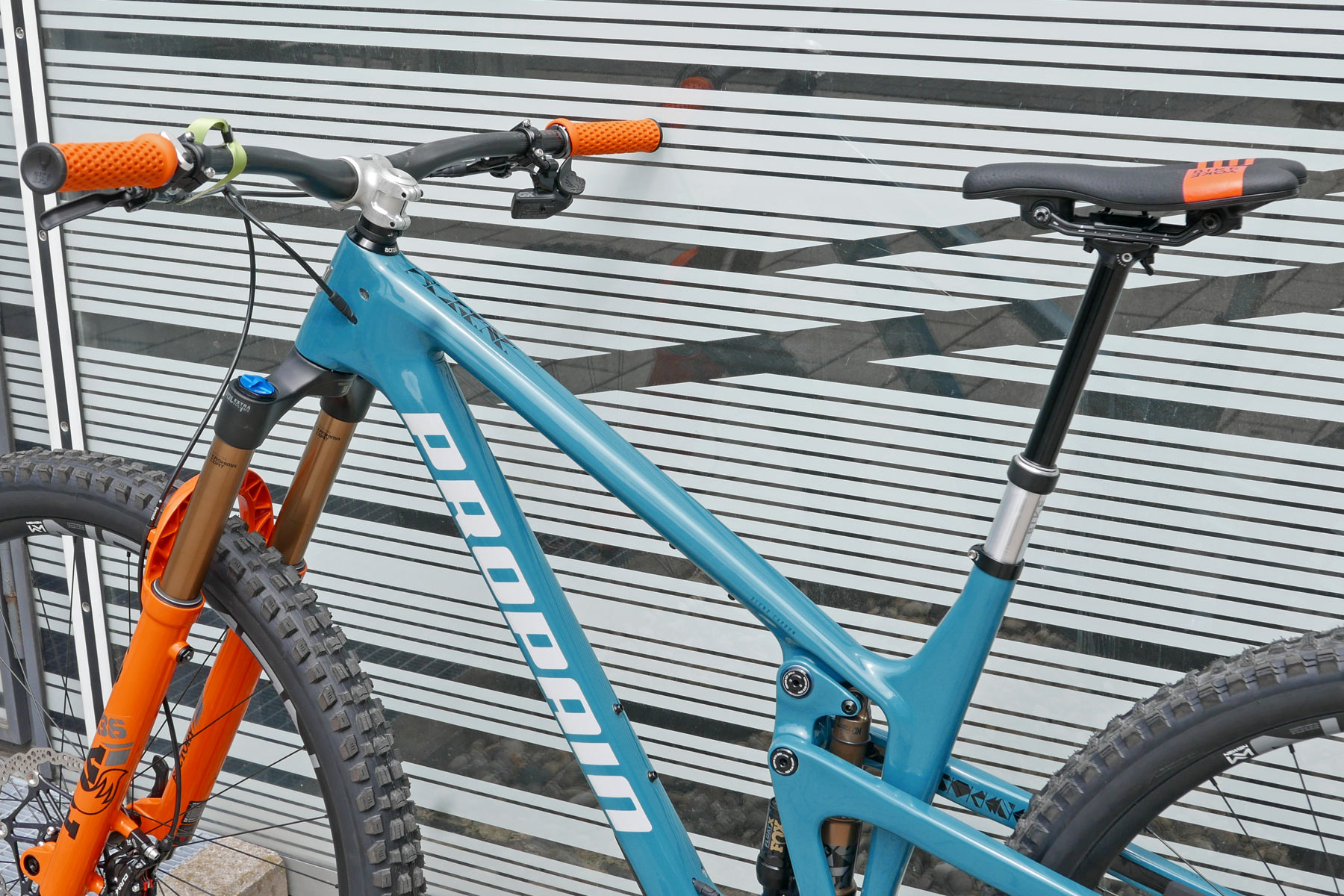
The secret to BikeYoke’s new Revive Wireless dropper is that the only parts that are completely new are the electronic dropper actuator, the wireless remote, and each own’s rechargeable batteries. The technical hydraulic internals are the same proven Revive mechanical dropper technologies, down to the fact that the wireless post shares the same service parts as the regular Revives.
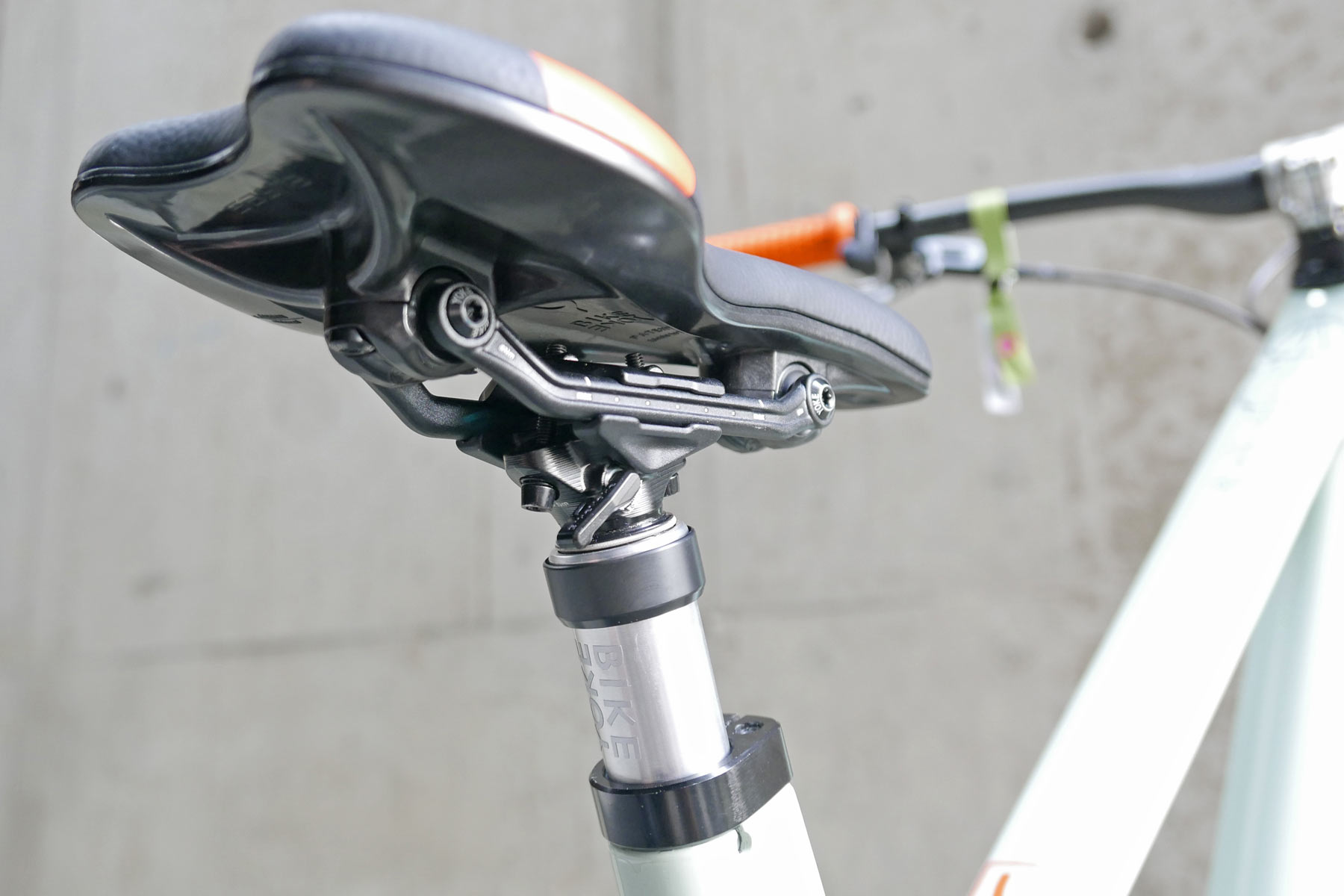
That’s kind of a huge deal, because this is going to be an expensive dropper, but you can be sure that the post will continue to go up and down smoothly for a long time, and any bounce you get from air sneaking past its internal seals is easily corrected with the little Revive reset lever.
Tech details
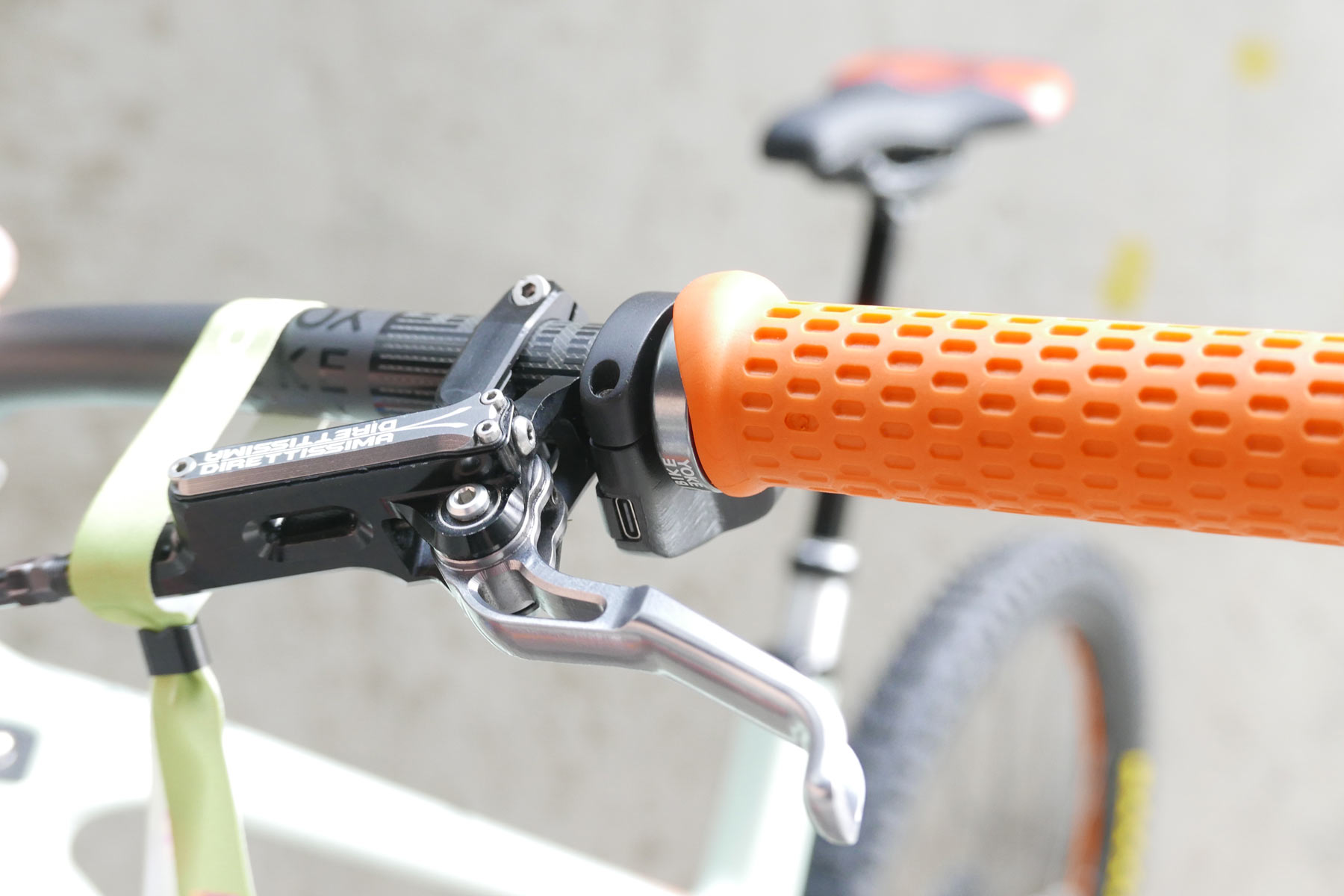
The Revive Wireless dropper communicates with its wireless remote via Bluetooth LE. That also means there is an opportunity for a bit of adjustability in the speed of return via a companion mobile app, but you won’t need an app to use or even set up the dropper. Both remote & dropper have 2 tiny LEDs (red & green) that will show the battery status of each other at a simple glance.
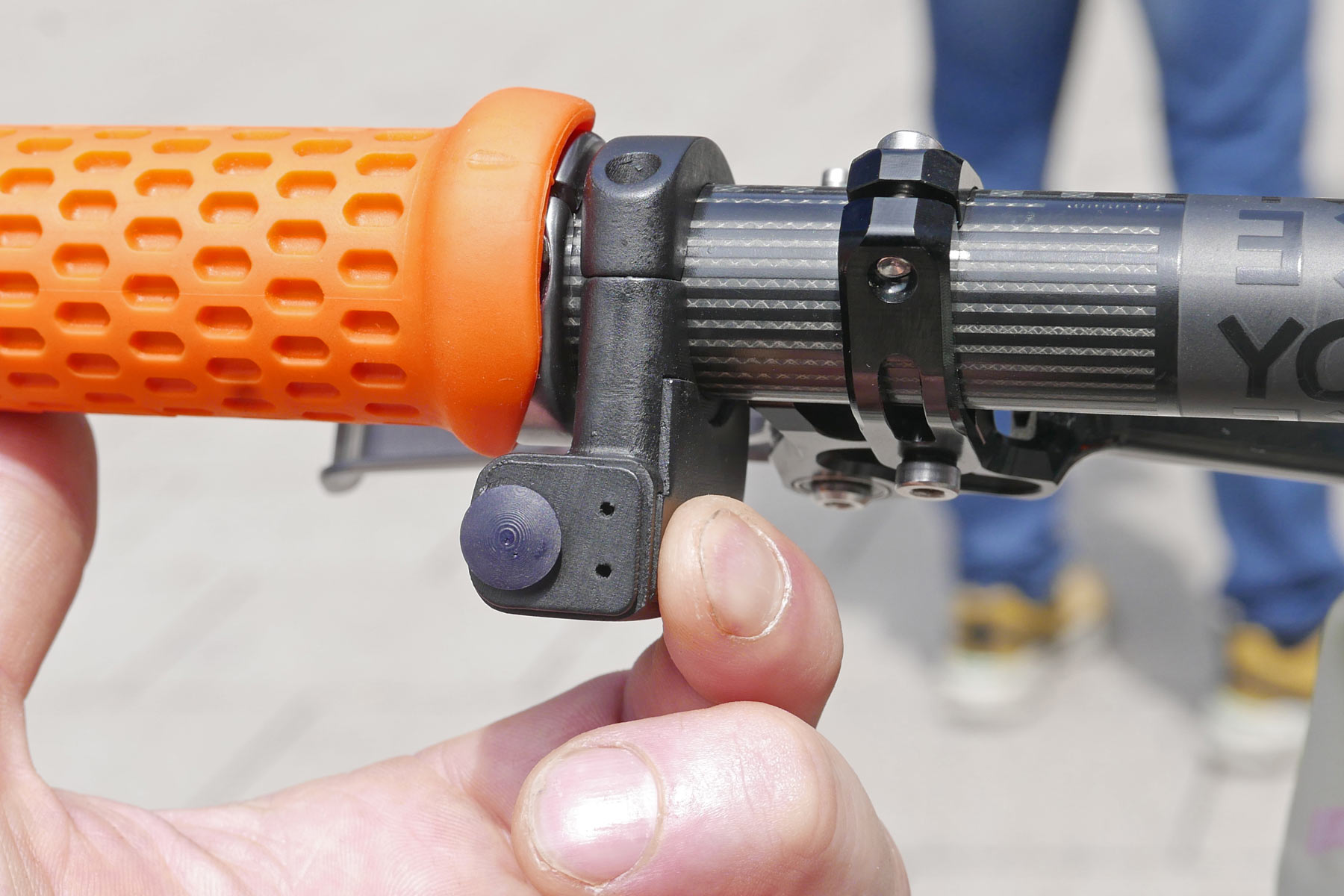
Both wireless dropper and remote have their own self-contained li-ion internal battery that is said to work for ‘several’ months of regular use, rechargeable with a standard USB-C port on each. That means removing the post from your bike to charge, which Stefan says is kind of a bonus feature to make sure mountain bike riders don’t leave their post in forever until it seizes in their frame.
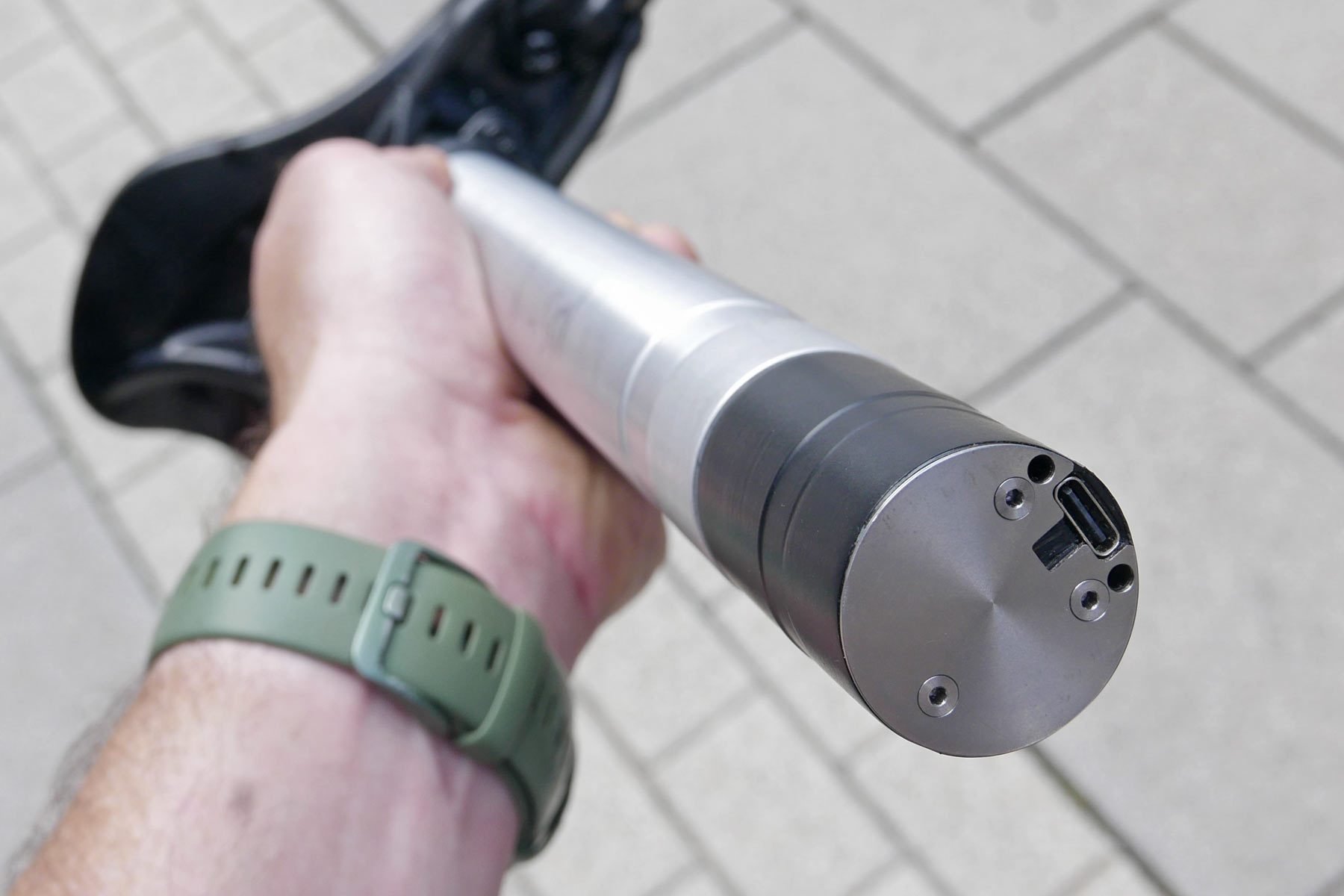
BikeYoke says the new wireless dropper is actually even a bit lighter than the original versions. The electric actuator that opens and closes the valve to operate the post does add a bit of weight, but that is offset by the fact that the small self-contained wireless remote is considerably lighter than a mechanical remote with a long segment of continuous housing and wire cable inside.
The addition of the actuator does add about 13mm more overall post insertion length at the bottom of the dropper, but BikeYoke has also trimmed roughly 5mm of stack off the post’s head – resulting in the wireless dropper being about 10mm longer than a mechanical Revive.
First Drops
The standard remote is super tiny and made to take up minimal space on the bar – it will be an injection molded plastic part in final production, likely with a removable alloy clamp. It requires very little force to actuate, and felt as fast as any mechanical dropper I’ve used. There’s not a ton of tactile feedback pushing a tiny button in about 2-3mm to drop the post (compared to the long throw of a mechanical dropper remote). But it only took me about 3 pushes of the button to get a sense for the fast press-then-drop motion, and it was of course, a lot easier than any mechanical remote.
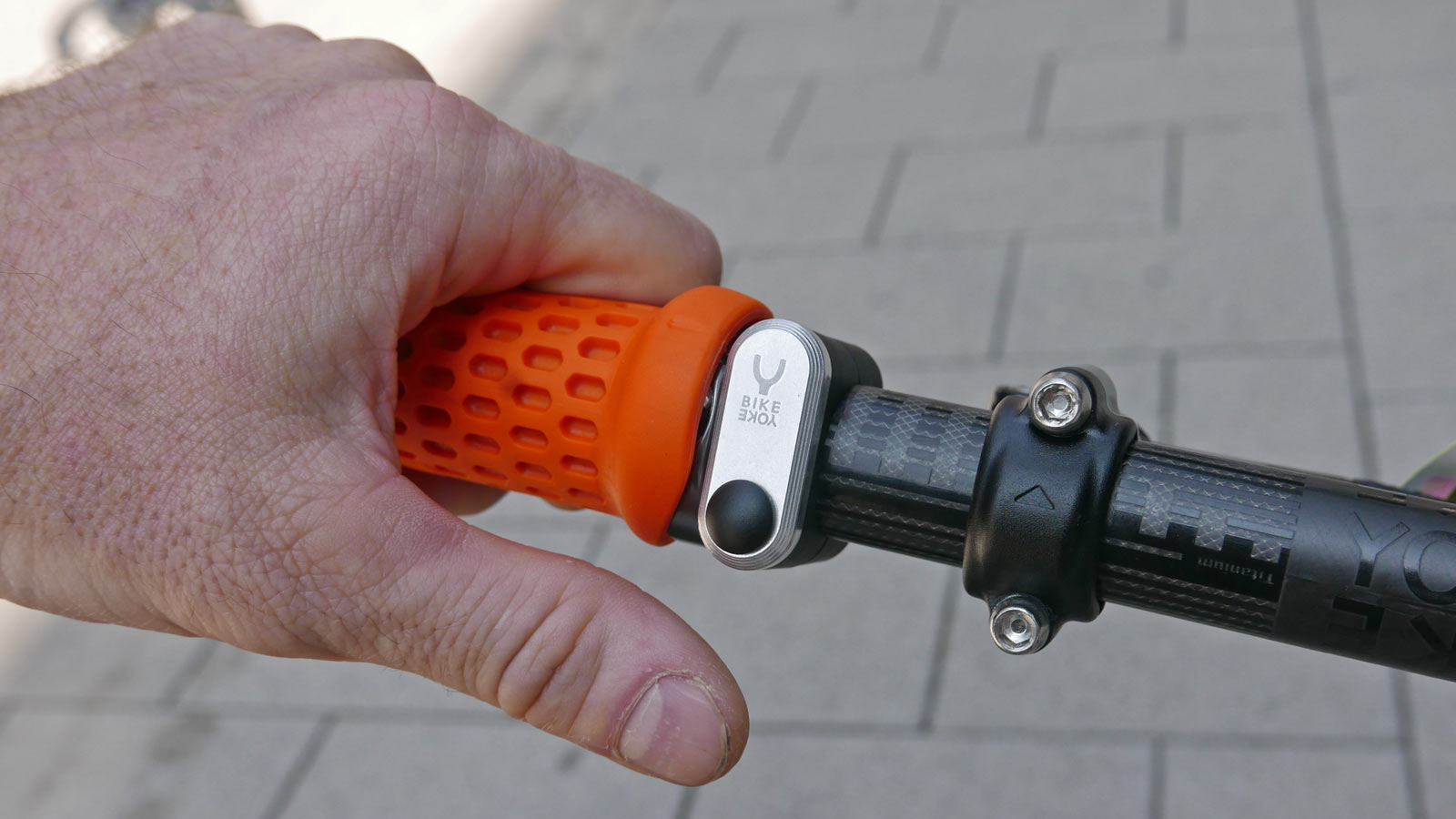
BikeYoke also showed us an even smaller remote that uses a small wired-in separate battery that can be mounted inside of a handlebar for bars with internal shift wire routing.
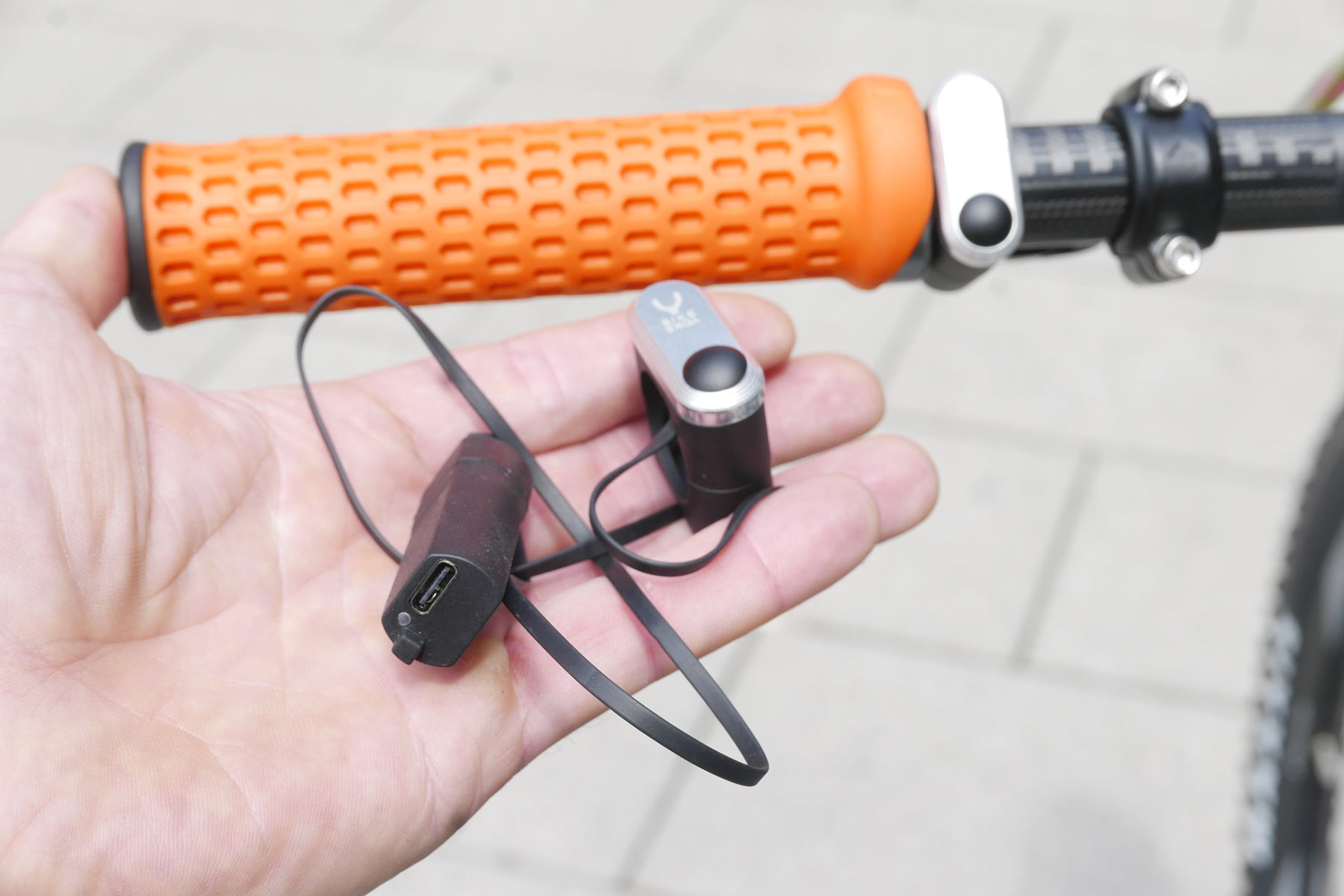
That will likely be an OEM-only option at least at first, but it reiterates the possibilities of how easily you can operate a wireless dropper with all sorts of remote. BikeYoke also makes their own lock-on multi-density Grippy grips, and has considered the possibility they could even integrate the remote button into one of their grips in the future.
Interesting possibilities, indeed.
BikeYoke Revive Wireless Dropper – Pricing, options & availability
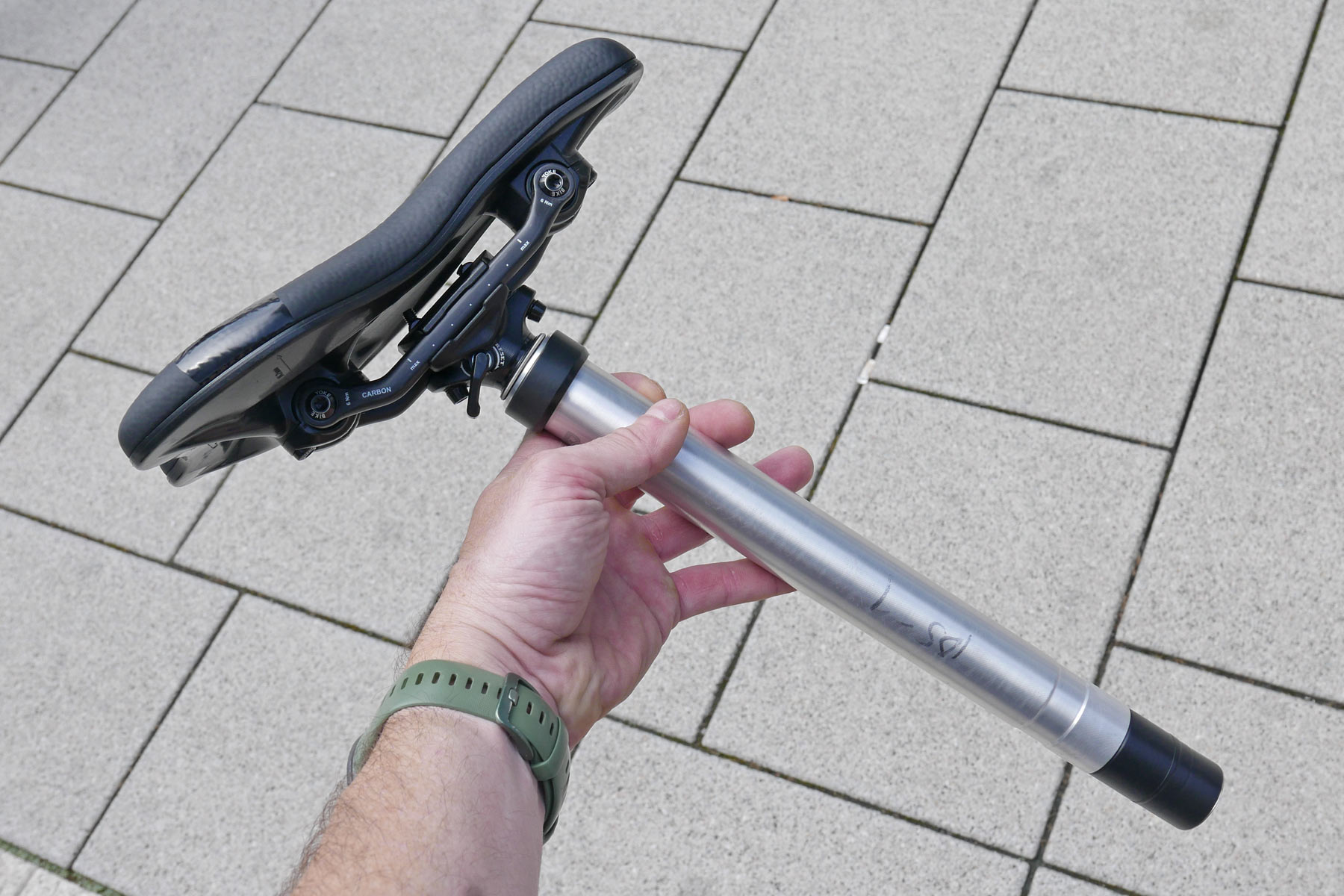
Officially the new BikeYoke Revive Wireless is a MY24 (model year 2024) product meaning you will have to wait until the start of next year to get one – ideally they should be ready for consumers by the spring riding season. That’s still quite a ways off, and as BikeYoke finalize some of the production details in their remote, they still don’t have an official price yet. But on-the-record/off-the-record, they suggested that BikeYoke are targeting a retail price that’s a good bit cheaper than the SRAM AXS dropper or maybe half again more expensive than mechanical Revive posts – including the wireless remote.
As for sizes, it will essentially be offered in all the same options as the mechanically-actuated Revives since they share a lot of functional internals – so that means at least 30.9 & 31.6mm diameters, and travel options from 125mm up to 213mm. It might come in this silver anodized version if there is good response prior to production, otherwise they can always fall back on black.
Prototype modular platform pedal project
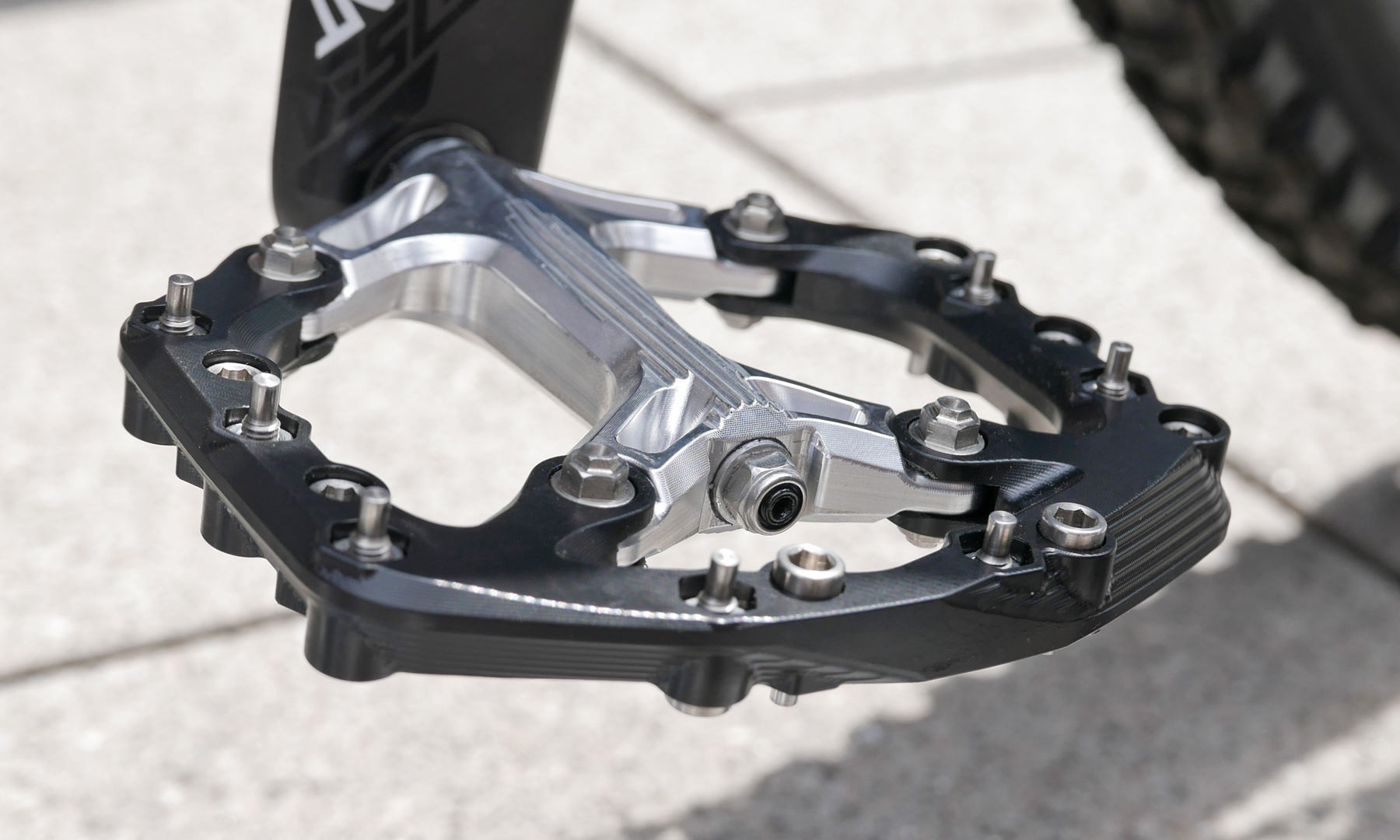
Another prototype project are these modular platform mountain bike pedals. The idea was to develop a solid, reliable alloy pedal body with a serviceable axle and rotating parts, then bolt on a replaceable composite body with the traction pins.
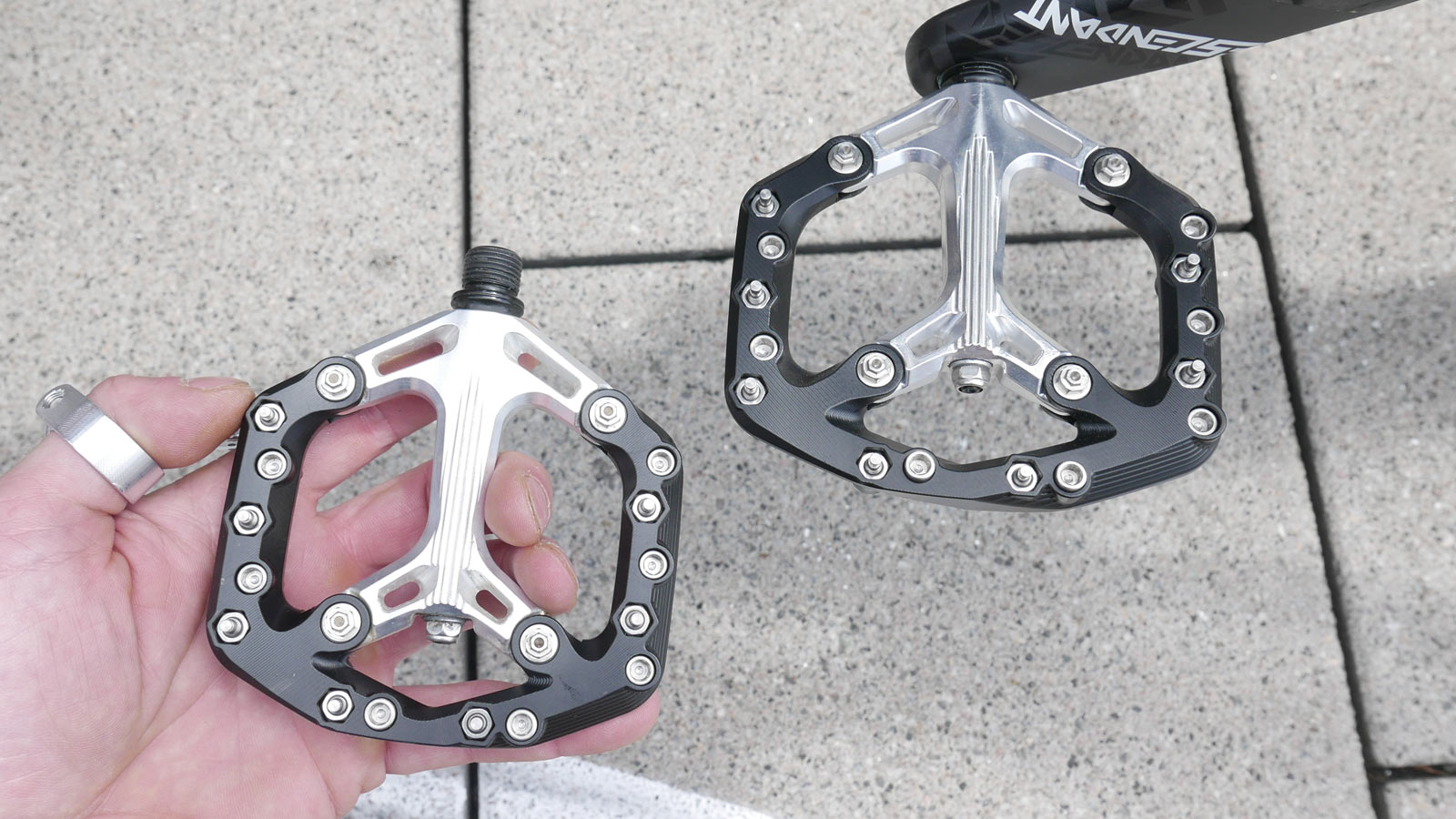
That modular design will allow BikeYoke to offer at least a couple of platform sizes, and also let them tweak materials and pin placement. These prototype pedals are machined from slippery Delrin engineered plastic with 7 long replaceable traction pins per side, and 4 bolts that hold the alloy & plastic bits together.
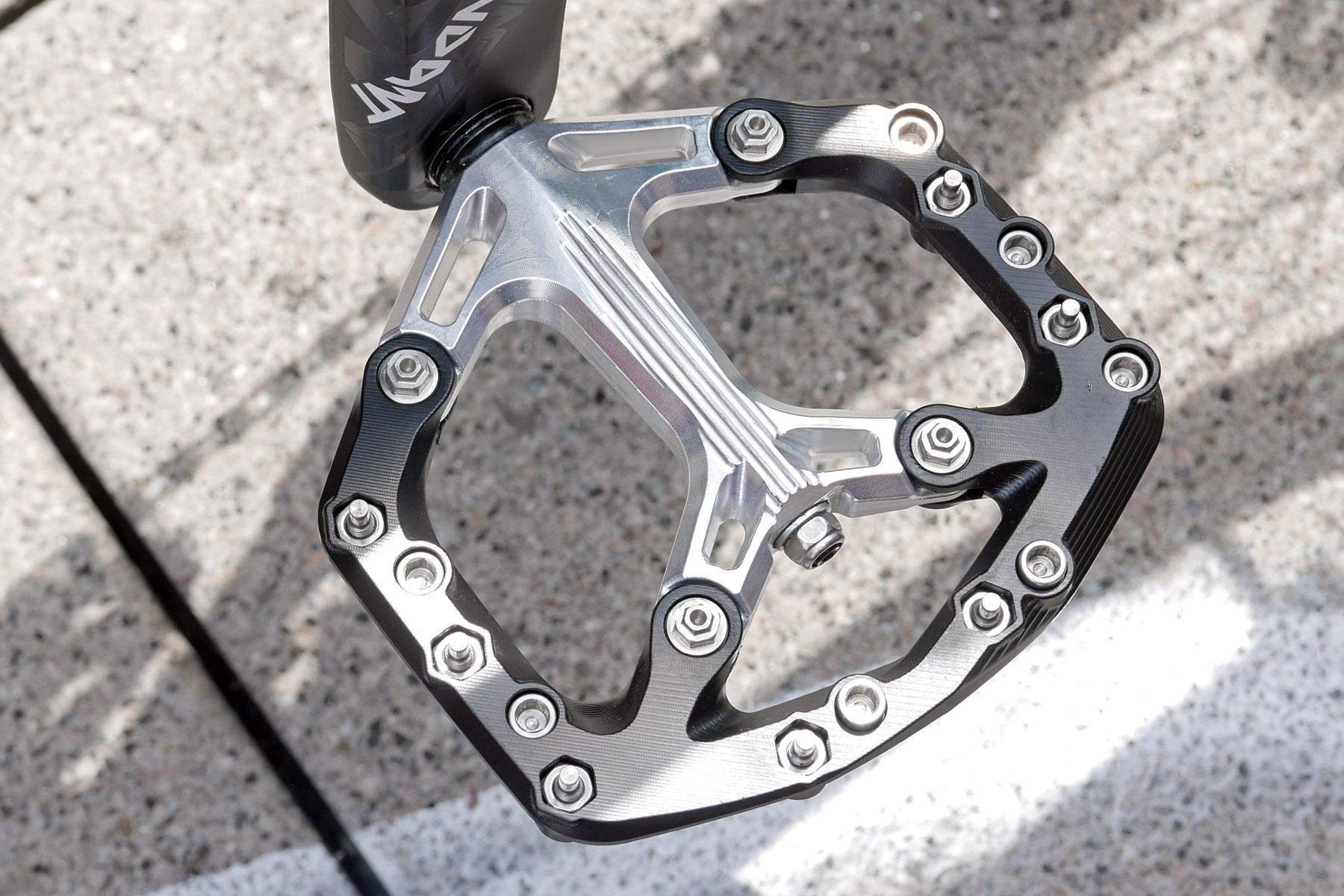
Now that BikeYoke have ironed out the materials and connection points, the next step will be optimizing the lower leading edge of the pedals’ outer platform to slide over trailside obstacles. We’ll keep tabs on the next stages of BikeYoke flat pedal development.
Prototype 35mm comfort mountain bike handlebars, too!
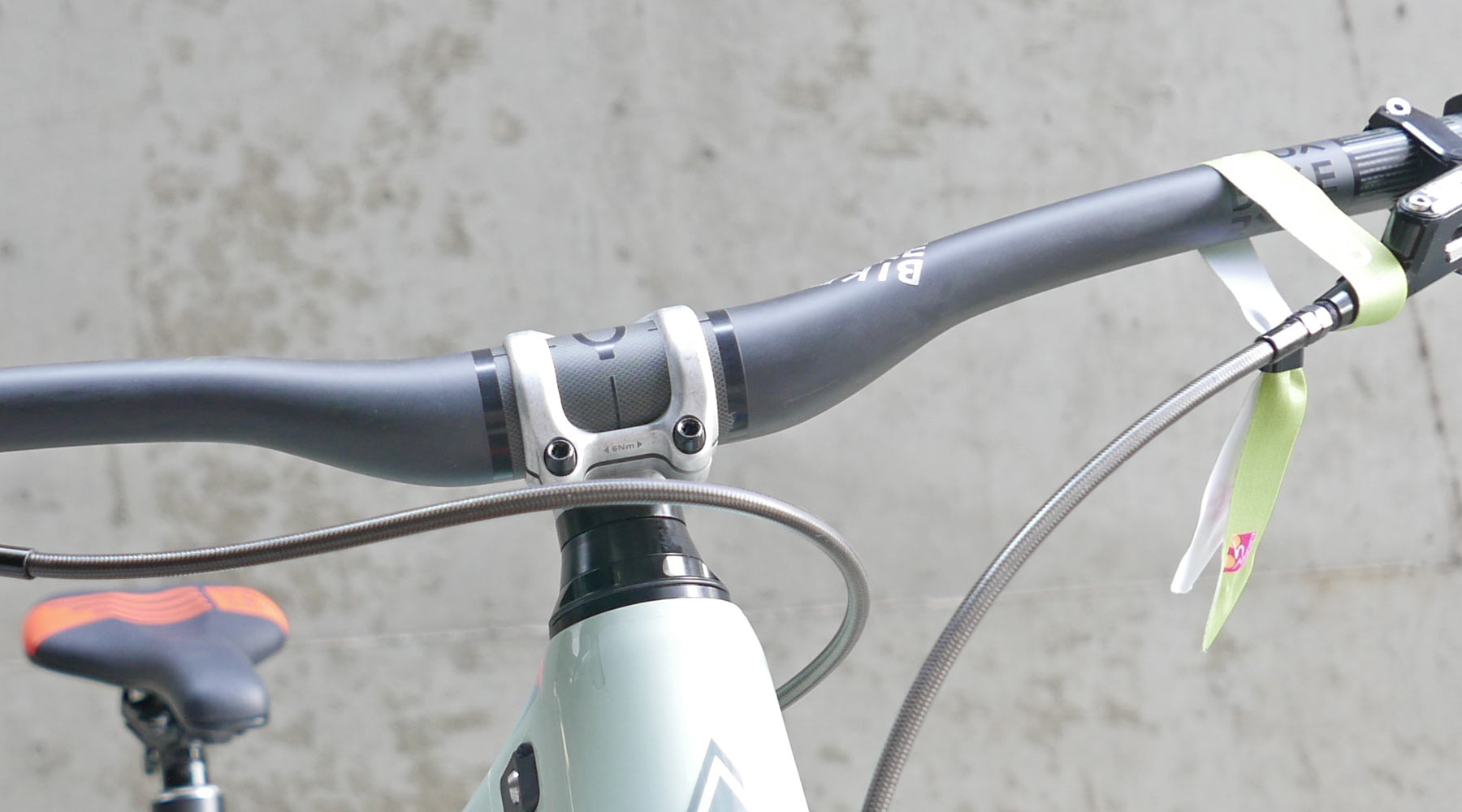
The new BikeYoke wireless dropper also happened to be mounted on top of some in-development carbon mountain bike bars that weren’t entirely round. With a flattened profile in the rise of the bars, BikeYoke is able to balance some real vertical comfort with the torsional stiffness of modern 35mm diameter bars. The bars also feature titanium mesh reinforcement in the brake/shifter/remote clamping area for extra security.
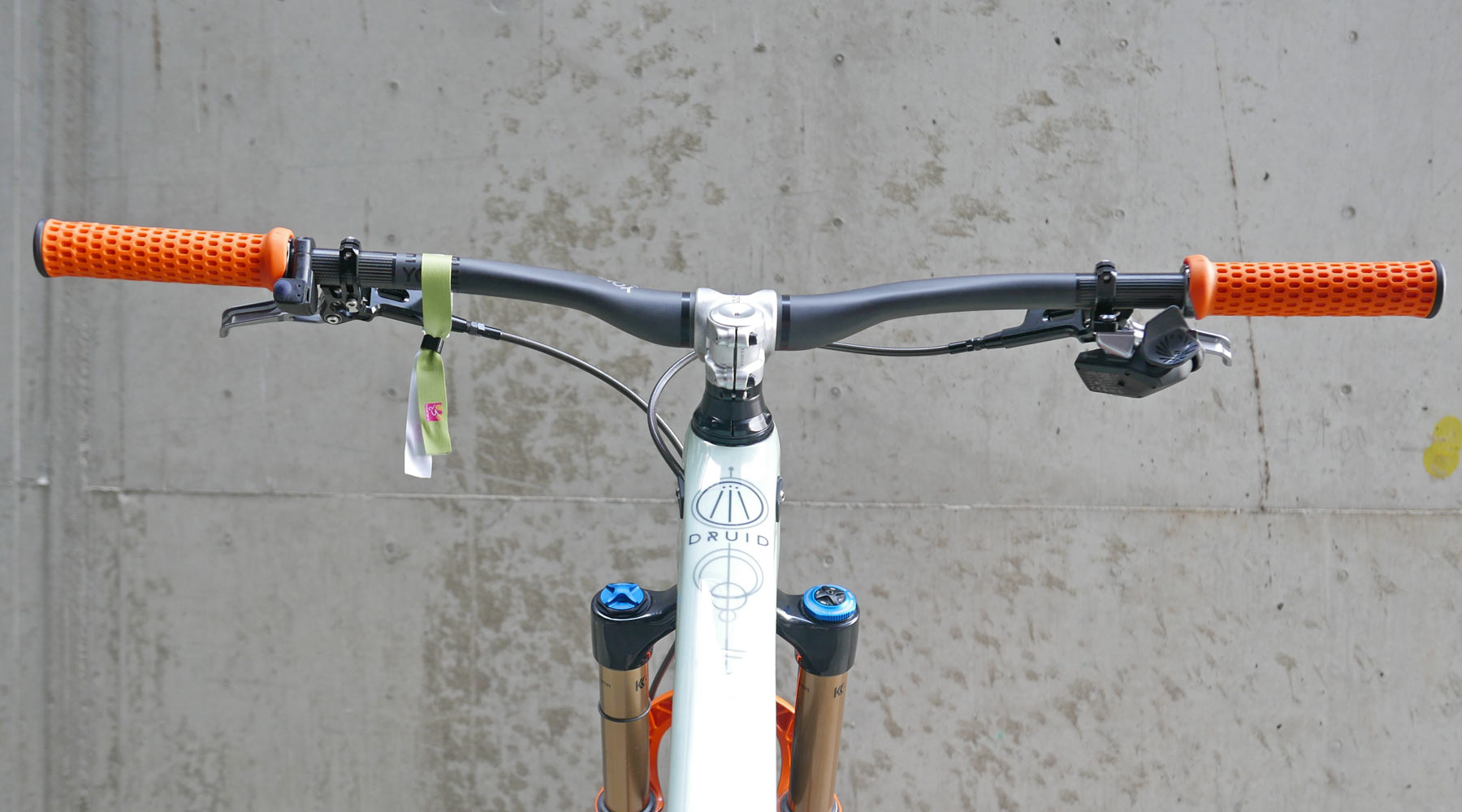
BikeYoke says the new carbon bars don’t have a set release date yet, as they are still working to optimize layup to get the best rider comfort, while still passing the most stringent strength, stress & impact-resistance testing on the market.
Don’t worry, I personally find just about every modern 35mm bar too stiff, so I’m be keeping a close eye on this project and will share more news whenever I know more.
And for sure, we’ve put our name on a short list to test the BikeYoke Revive Wireless dropper as soon as one is ready to review!
